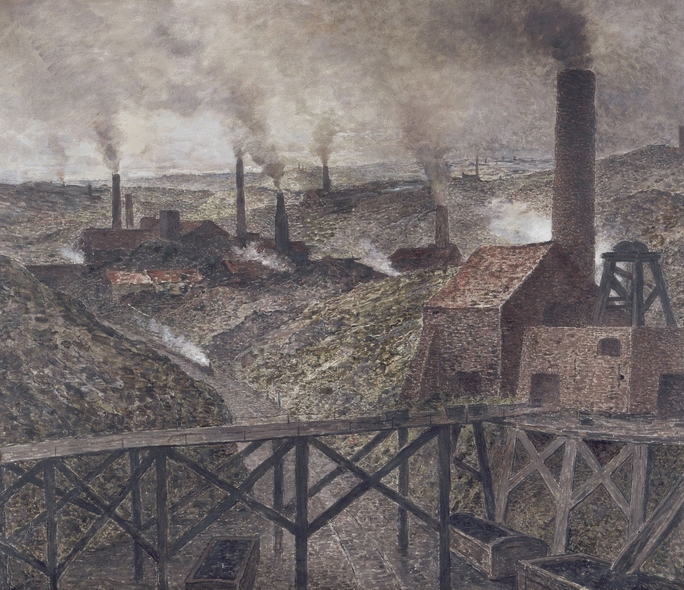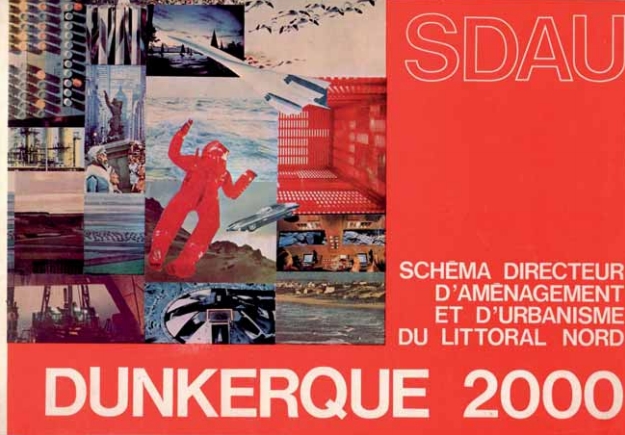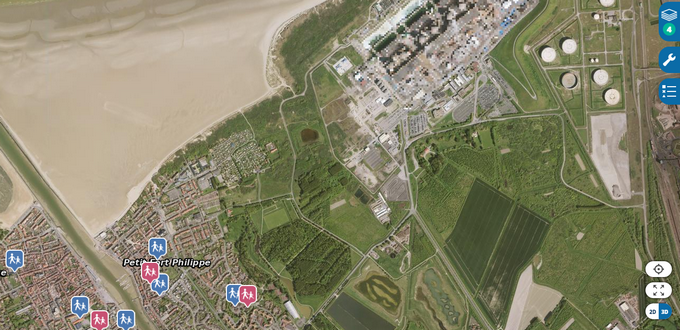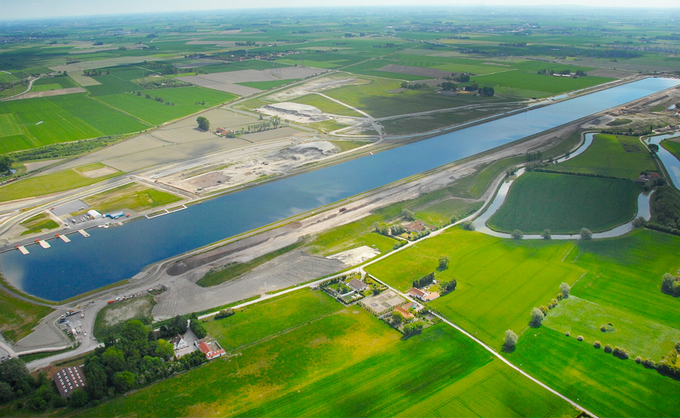The rehabilitation of brownfield sites, a challenge successfully met by Dunkirk
Some industrial towns like Dunkirk (France) have adopted a new sustainable landscaping model. An inspiring example!

“Reconciling industry and nature may seem impossible yet highly artificialized sites are sometimes astonishing reserves of biodiversity” stated the conference Using nature to restore industrial sites and landscapes. In October 2020, the CNFPT, HORTIS and the French town of Graveliness addressed the problem of how to rehabilitate brownfield sites for the local authorities present. A challenge it appears difficult to meet. However, some industrial towns like Dunkirk (France) have adopted a new sustainable landscaping model.

An industrial area in Dunkirk
© Photo credit: David Debray / Adobe Stock
Man and nature reunited in a new partnership for green urbanism
Where does the deeply rooted divorce between human activity and nature come from? This separation which has modeled our landscapes dates back to the 19th century, explains Remi BEAU, Ph.D., who studies the requalification of industrial landscapes as green spaces.
The almost instantaneous Industrial Revolution symbolized by the steam engine in the United States and the coal mines in Belgium radically transformed the landscape. A dualism was born between the exploitation and the protection of the land but no balance was struck. The reconciliation of industry and nature seemed inconceivable and this antagonism became a recurrent theme in 19th century art.

Constantin Meunier, Au pays noir (1893)
It was only recently that the reconciliation of man with nature became a necessity. Now, we understand the impacts of human activity on the ecosystem and new concepts like safeguarding biodiversity have been adopted. Society has also changed and deindustrialization is accelerating. In France, 2.5 million jobs in industry have disappeared since 1974 (1). The idea of a new partnership is gaining ground in which man does not have absolute domination over nature and works closely with it, including in sites polluted by human activity (using phytotechnologies for example).
Francis NAVE, former deputy director of the Dunkirk Town Planning Service, and William MAUFROY, director of the Dunkirk urban area urban memory center, explain Dunkirk’s outstanding performance in brownfield sites conversion.
Nature and the rehabilitation of industrial and harbor brownfield sites: the challenge for Dunkirk
In 1944, the Dunkirk region was left devastated by the Second World War. Top priority was given to rebuilding concrete tower housing blocks. Massive industrialization of the port led to a huge increase in population (Grande-Synthe area grew from 1,151 to 24,000 inhabitants), with all the societal problems that engendered – and the inevitable impacts on the environment.
Dunkirk’s first green town plan
Dunkirk’s land settlement policy has changed several times. The first planning document dates back to 1974 with the Master Urban Development Plan (Schéma Directeur d’Aménagement Urbain - SDAU). The first green town plan was created to preserve the non-urban and non-harbor coastline and 600 ha of dunes. It also included landscaping with the objective of screening industrial estates with trees. A leisure and nature area compensated for the loss of seaside space due to the creation of the port. However, green zones rich in biodiversity were absent. Massive forestation was used to drain the marshlands.

First urban development plan of Dunkirk
A crucial change in land use
Dunkirk was hard hit by the world economic crisis and the shipyard closed in 1987. This is why most landscaping projects were only implemented in the Nineties.
In 1990, a more precise urban plan was adopted to reflect the new economic context. It is more attuned to nature and this time includes differentiated habitats connecting green spaces together. Massive forestation is abandoned in favor of green infrastructures like the Gravelines Polder, which separates the nuclear power plant from the city, designed as a patchwork of natural environments (dunes, thickets, etc.). To attract more tourists to the area, a former landfill has become a public golf course.

The Gravelines Polder today
(nuclear power plant top edge, town bottom corner)
Industrial sites blend into the scenery
Another objective of the new urban plan was to improve the insertion of local industries into the landscape and protect natural ecosystems. Dunkirk’s companies were associated with the project and, for example, contributed to the greening of the approaches to the A16 expressway to project their corporate image and highlight their infrastructures.
An “Industrial Environment” charter signed in 1993 gave the guidelines and confirmed the commitment of Dunkirk’s industry to insertion into the natural landscapes.
Read also: When landscaping and transport networks join forces
Acceleration towards meeting the challenge of safeguarding biodiversity
In 2007, the SDAU was replaced by the “Guidelines for Territorial Cohesion” (Schéma de Cohérence Territoriale). It conserved the former green town plan principle but gave public authorities much more latitude in their landscaping choices. The industrial image of the territory gradually disappeared and became more attractive to tourists thanks to the appearance of big leisure and natural spaces like the PAarc on the Banks of the river Aa, very often resulting from brownfield sites rehabilitation. Working together with the environmental conservation associations, the port made an inventory of its natural heritage, which led to the Natural Heritage Guideline Plan (SDPN), which today is fully integrated into the port’s development strategy.

The PAarc on the Banks of the river Aa
After 50 years of constant efforts, the territory of Dunkirk has now combined its industrial activity with the protection of nature intelligently, diversifying local business with tourism.
Watch the whole conference on Youtube (in French)
By reclaiming its brownfield sites and favoring biodiversity, Dunkirk has resolved the problem of industry vs. nature. But nothing would have been possible without ongoing discussions between all the different territorial authorities and associations. An inspiring example for any community wanting to make green urbanism a priority! In the same spirit, check out the initiative in Taiwan to rehabilitate an abandoned shopping center.
(1) France Culture: La désindustrialisation à la française

